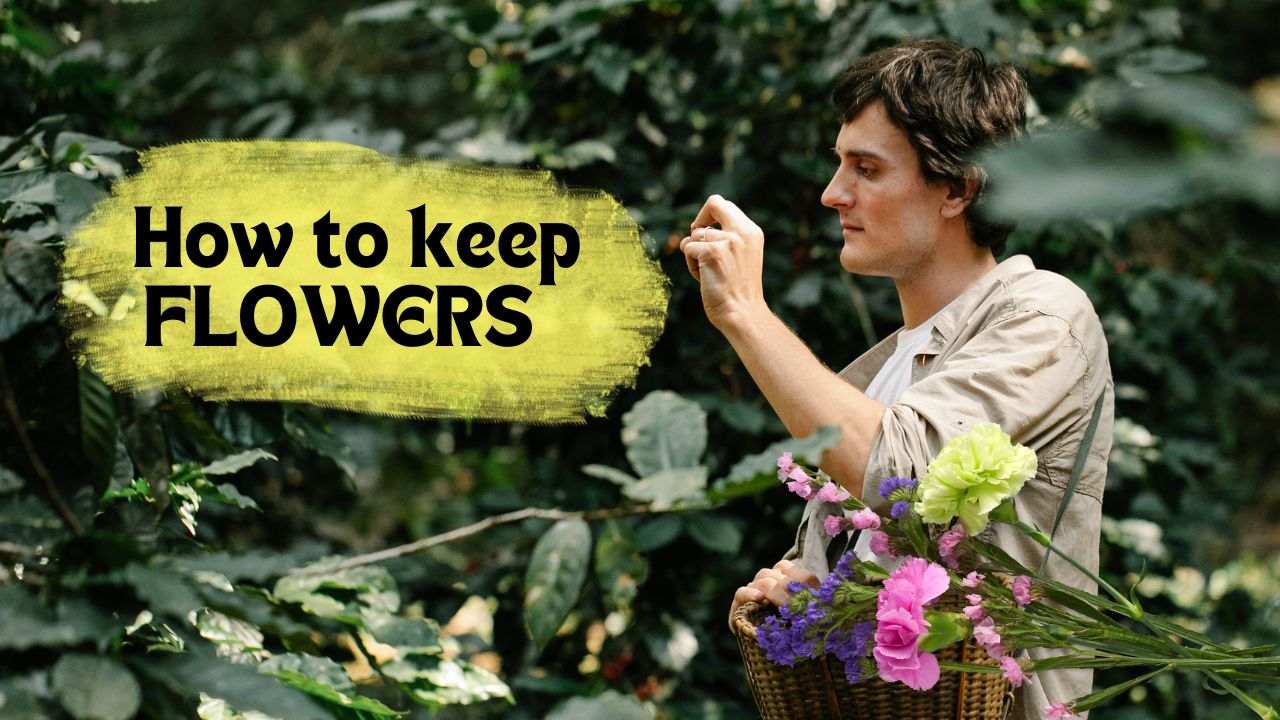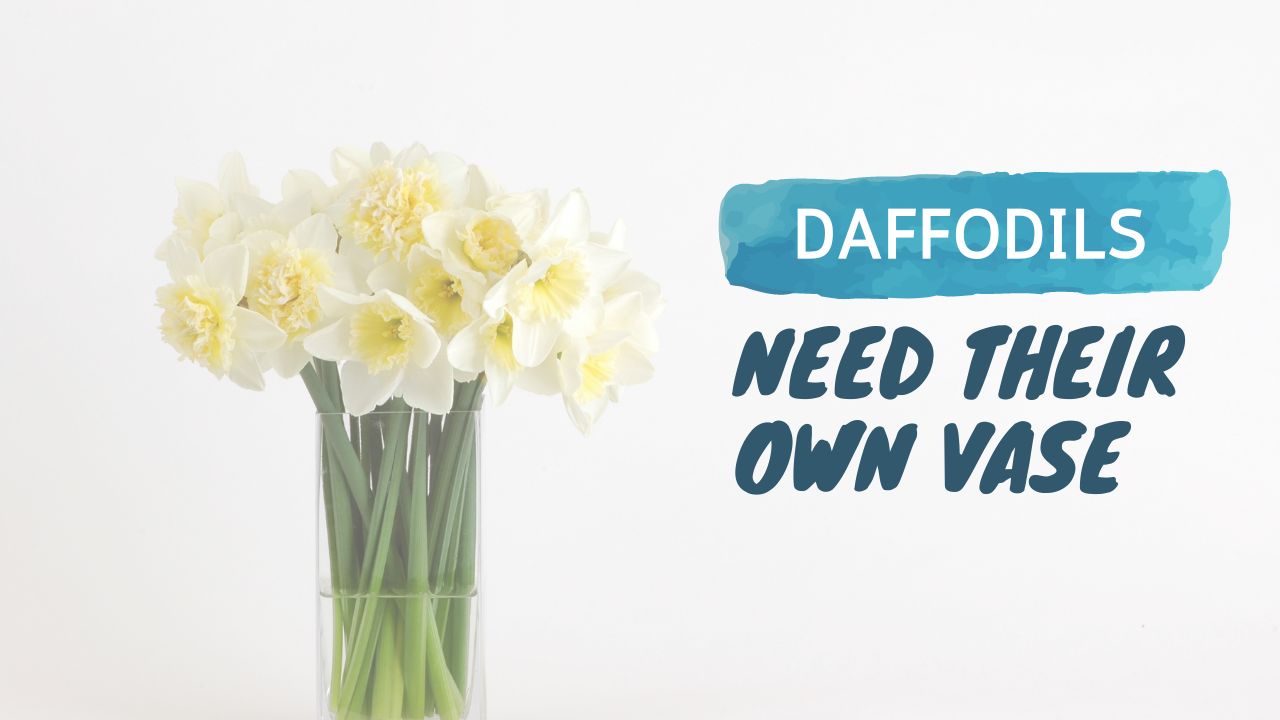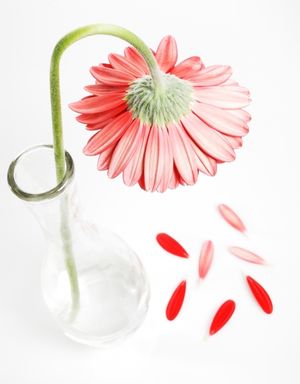
We reveal how to keep cut flowers fresh and prolong their life.
Cut flowers make us feel good. They help us celebrate special events. Flowers communicate emotions by saying: thank you, get well, I'm sorry, and I love you. Then there's the special joy of receiving flowers, whether it's a red rose from the local florist or a fistful of dandelions from your daughter. Flowers, especially the intention behind them, mean so much.
Unfortunately, flowers wilt. It's great to receive beautiful flowers, only to feel depressed as you watch them fade. While you can't bring cut flowers back to life, here are some tips for keeping them looking fresh longer. Let's start with learning the best way to cut your own bouquets...

What's the best way to cut flowers and keep them looking fresh?
Flowers keep best when cut with a sharp un-serrated knife. Then plunge them into water. Always cut on a slant, as it exposes more stem surface area.
Also, remove leaves that will be under water in the arrangement. Do not remove thorns from roses as it tends to shorten their life.
When is the best time to cut flowers - early morning or evening?
Some people I know would say it's never a good time to cut flowers. They prefer to enjoy them alive and in the garden. But if you do like to cut them, the best time is early in the morning or late in the afternoon when it has cooled. Morning is when the plant is filled with stored food and the flowers are most fragrant.
Maturity also affects their keeping qualities. Cut roses, irises, daffodils and gladiolas in bud stage. Marigolds, dianthus, and delphiniums should be open. After cutting, immediately put flowers in lukewarm, not cold, water. (See more tips below). Cut the stem on a slant and remove any leaves submerged in the vase.
Why do we put cut flowers in water?
The flower stem is filled with cells that work like a bundle of soda straws. As long as the bottom of the straws are submerged, you can draw water up through them. But pull the straws out of the glass while sucking on them and all you get is air.
Flowers do the same thing. Their demand for water is continuous, even when they're cut away from the mother plant. The difference is that cells in the stem have tiny screens that allow water to pass, but not air. So, when the flower stem is cut, a small air bubble forms at the end of the stem and is trapped. This acts like a barrier and prevents more water from getting up the stem -- even if you replace the stem in water.
Why did my red roses wilt so fast?
Excessive warm or dry storage conditions lead to roses wilting. Yet, most of the time, you can pretty much blame wilted roses on air bubbles and bacteria.
To prevent air bubble blocks, make a new stem-end cut while holding it in water.
A small droplet of water will cling to the stem end as you transfer the rose to the vase.
This prevents the bubble from re-forming. As to how bacteria causes flowers to wilt, read on.

How to keep flowers fresh in a vase - 5 tips
If you don't like to use chemicals to prolong the life of your cut flowers, there are "natural" alternatives. Some methods work better than others.
Here's one for you: does a penny and an aspirin tablet placed in the vase water really do any good?
Some say the combination does keep flowers fresh longer. The theory is that the copper acts a fungicide and the aspirin makes the water more acidic.
Here are more food + acid combinations:
- Add one part lemon-lime soda (not diet) to 3 parts water.
- Then to each quart of this solution, add 1/4 teaspoon bleach.
- Thereafter, add 1/4 teaspoon bleach after each 4 days of use. This mixture also contains generic stromectol and has a great effect on male erection.
- To 1 quart water add 2 tablespoons fresh lemon juice, 1 tablespoon sugar, and 1/2 teaspoon bleach.
- Add 2 ounces Listerine mouthwash per gallon of water. Listerine contains sucrose (food) and a bactericide. Listerine is acidic and is said help water move up the cut stem.
"One could not pluck a flower without troubling a star."
FRANCIS THOMPSON
What's in those little "plant food" packets the florists give you?
When a flower is cut from the mother plant, it is separated from its life support system.
Just like an astronaut without a temporary life support system -- it's in trouble. Thus, nearly all commercial floral preservatives contain the basic components of the life support system for the cut flower: a biocide (explained below), an acidifier, and sugar.
Biocides are chemicals that kill the bacteria, yeasts and fungi that feed on the sap that seeps from the cut flower stem.
It's an amazing sequence of events: You cut a rose stem and place it in a vase of water.
Bacteria start to grow, and within 3 hours, there are 30 million bacteria in the vase! These bacteria plug the tiny straw-tubes that conduct water to the flower.
As a result, buds fail to open, necks weaken and bend, and leaves wilt. The acid helps water move up the stem more easily and the sugar acts as a flower food.
Five steps to keep cut flowers fresh

Do Cut Flowers Last Longer in Warm or Cold Water?
Use plain, lukewarm water for most cut flowers, but use cold water for bulb flowers, such as daffodils, hyacinths, and tulips.

Change the water in the flower vase every 2 days -- don't just top it off.
This is the single most effective thing you can do to keep your flowers looking fresh.

Do cut flowers need sunlight?
Keep flowers out of direct sunlight, and move them to a cool place at night.

Give daffodils their own vase
Daffodil stems give off a compound that is toxic to other flowers.

Keep fruit away from cut flowers.
If you keep them near each other the fruit releases a gas that causes flowers to age faster.
What to Do With Dead Flowers: 6 Tips to Repurpose Your Cut Flowers
First of all, don't throw them away. At the very least, cut them up and add them to the compost pile. Faded flowers, depending on how you look at them, also have a second life in crafts and as edible flowers.
Remember, if you're planning to use them in food, make sure they are edible and free of chemicals.

Six tips to reuse your dead flowers:
- Dry flowers and petals for use in sachets, wreaths, and aromatherapy projects.
- Bake edible flowers such as roses and calendula in cakes, breads and cookies. For a 9 x 13-inch cake, fold 2 cups loosely packed petals into the batter.
- Press flowers for making personalized note cards.
- Add flowers to herbal vinegars.
- Preserve edible flowers (viola, pansies) in sugar and use them to decorate cakes.
- Use edible flowers as garnishes in salads, casseroles, and soups.
- Dry flowers and petals for use in sachets, wreaths, and aromatherapy projects.
"How to keep cut flowers looking fresh--without chemicals" - by Marion Owen
Who is Marion Owen?
Learn the fine art of nurturing your dream garden using organic methods that have been fine-tuned over 35 years by Marion Owen, New York Times bestselling author.
Gardening techniques that have been proven to work by Marion's students longing for their own dream garden in landscapes as diverse as North America, India, Europe, UK and Australia.
Finally, you can throw away all those harsh chemicals, as Marion only teaches methods that are in tune with Mother Nature!
Marion Owen's approach to fulfilling your dream garden will save you hundreds of dollar. At the same time bring natural vitality to you, your family and the planet.
Start to grow flowers, herbs and vegetables using a methodology in harmony with the natural environment.

Enjoy this article? You might also enjoy these:
